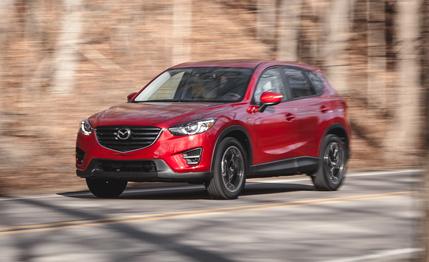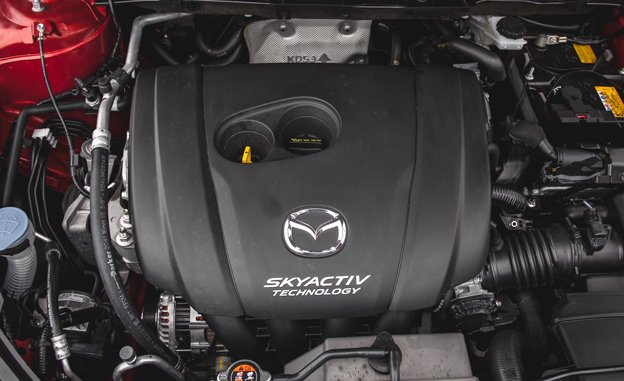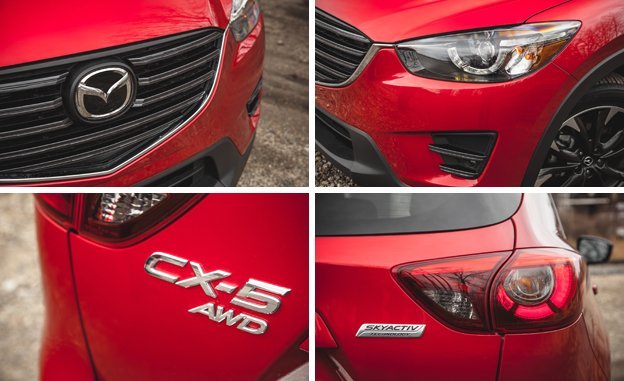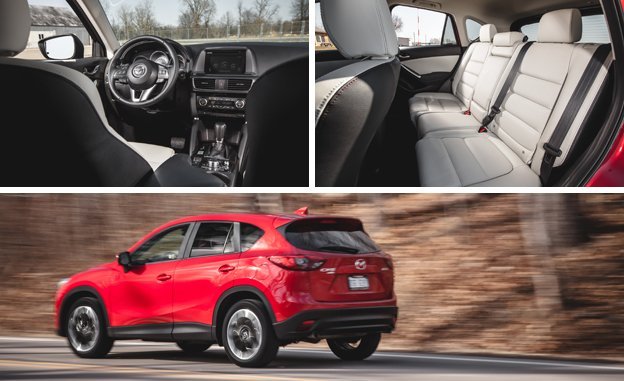
 Instrumented Test
Instrumented Test
Mazda, the maverick, does so much with so little. The Hiroshima-based company almost singlehandedly keeps the affordable-sports-car-flame flickering with the MX-5 and, for the most part, has resisted intertwining its operations with other automakers in ways that would help growth but almost certainly blur its focus. There’s no large pickup or truck-based SUV channeling fat profits into the company coffers, covering the tab for poorly conceived, money-losing offerings elsewhere in the lineup (if Mazda had any). Small in scale compared with other mainstream brands, Mazda’s every model must stand on its own.
The CX-5 certainly does. We’ve liked its balance of utility, efficiency, and pleasant driving dynamics since the crossover’s introduction as a 2013 model. That first-year model’s power deficiency was remedied for 2014 with the addition of the 184-hp, 2.5-liter four to the CX-5’s powertrain lineup. And for 2016, the plain-yet-pleasant cabin gets upgraded interior materials and design features that wouldn’t look out of place in an Audi. The automaker has already classed up the Mazda 3 and Mazda 6 with essentially the same treatment.


Midcycle refreshes can be tricky. But Mazda wasn’t about to start fixin’ what ain’t broke. Aside from some new LED head-, tail-, and fog lamps available on upper trim levels and a revised five-bar shield grille, the 2016 CX-5 possesses the same design grace and poise as its predecessor.
We’ve already mentioned the 2016 CX-5’s updates at its Los Angeles auto show unveiling, but it’s worth repeating that most of them focus on the cabin and things that the driver and passengers interact with most. In general, the refreshed CX-5’s interior details are classier. There are nicer materials and tasteful accent trim on the dashboard and console. The armrests are more comfortable. Thoughtful touches include padding where one’s knee might rest against the side of the center console when, say, exercising our test car’s 0.81 g of lateral grip on a fun-to-drive, twisty road.
Stash space? Check. Mazda’s switch to an electric parking brake frees up real estate on the console where the conventional handbrake once lived. There are two USBs and an auxiliary jack in an easily accessible open storage bin beneath the center stack. Another console cubby is right-sized for the car’s key fob (push-button start is standard) or other small items. But the big change is the adoption of the new Mazda Connect infotainment system on all but the base model. It uses an Audi MMI–like multifunction control wheel on the console, so there’s less need to lean forward to access some of the old infotainment display’s hard buttons. The touch screen itself grows from 5.8 to 7.0 inches this year, making everything easier to read.


Our Grand Touring test car also sported supportive, comfortable, and gorgeous Parchment leather seats; a grippy leather-wrapped steering wheel; and simple, easy-to-use climate-control knobs and buttons. Now if only the volume knob were on the driver’s side of the console and the backup-camera display had dynamic trajectory lines, the setup would be just about perfect. The CX-5’s gauges are rather blah, though, and would be more engaging with higher contrast and larger, more interesting fonts. This is a tiny nit, we know.
We’d like a little less engine noise, too; despite added sound insulation this year, the direct-injected 2.5-liter’s note remains a bit grainy at idle. Still, although our test vehicle’s 7.7-second zero-to-60 time shows that the 2016 CX-5 doesn’t have the beans to dust off a Ford Escape with the 2.0-liter EcoBoost turbo, the Mazda’s roster of carryover Skyactiv engine and lightweight chassis tech is more than enough to place it at the top of its class. The new CX-5 isn’t the quickest CUV in the segment, but it has the poise and agility of a sports sedan. Its ride is firm but not harsh with well-controlled body motions. The Mazda’s electrically boosted steering has just-right weighting, good on-center feel, and a natural buildup of effort in turns that feels positively (old-school) BMW-like.


If there’s one change for 2016 that could use fine-tuning, it’s the new Sport mode setting for the drivetrain. The spread between Normal (default) and Sport drive modes is too aggressive for a family CUV, as if it were a jump from another automaker’s Eco to Sport+ settings. Using Mazda’s Sport mode results in considerably higher rpm and lower gears than expected, and it can linger way too long between 3000 and 4000 rpm at part throttle when just cruising around. On the other hand, if you’re autocrossing your CX-5 . . .
Sport mode notwithstanding, the 2016 updates don’t affect the way the CX-5 drives, but they do make us like driving it even more. And for those who want it, the CX-5 now offers a host of active safety technologies such as adaptive cruise control, collision-mitigating braking, lane-departure warning, and automatic high-beam control (all part of our $34,140 Grand Touring’s optional $1500 i-Activsense package), as well as Smart City Brake Support (low-speed automatic braking) and adaptive front lighting as part of the $1505 GT Tech package that also brings navigation and LED head-, tail-, and fog lamps and LED running lights. It’s a CUV we can more than live with—we love it.